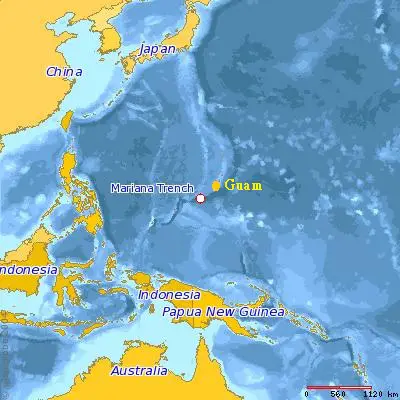Major opportunities are on the horizon for ocean shipping as the rapid pace of technology change will continue unabated through 2019 and beyond, according to industry research conducted by Navis, a part of Cargotec Corporation, and the provider of operational technologies and services that unlock greater performance and efficiency for the world’s leading organizations across the shipping supply chain.
The company predicts that the biggest trends driving the industry over the next year will include increased IT spending, greater collaboration and data standardization, trade wars, smart containers, automation productivity gains, and improved carrier capacity management and environmental efficiencies.
Navis’ 2019 predictions for the shipping supply chain include:
1. More budget allocated to IT spend: According to Navis’ Business Bellwether survey, some 90% of respondents believe their organizations will increase technology spending, including 56% who plan for an increase of 6% or more. Much of this spend will be targeted at the adoption of new technologies, which was cited as a top three priority for companies looking to improve operational performance. The top areas for increased technology spending, in descending order include, automation, business intelligence, planning and management systems, big data analytics, and SaaS applications and cloud services. Much discussed technologies like blockchain and IoT sensors were significantly lower on the priority list.
“Technology is just one part of overhauling a traditional supply chain industry,” said Andy Barrons, Chief Strategy Officer, Navis. “It may sound obvious but people and the investment decisions they make about the way the supply chain operates in the future will be the critical factor in speeding up transformative change.”
2. Greater Advancement in Collaboration and Standardization: The industry’s ability to share data requires dramatic improvement and executives unanimously agree that there is a strong need for standards that facilitate data sharing. According to Navis’ report, Working as One, more than half of all respondents said their operational performance would improve by at least 50% if they could share their real-time operational information. Looking forward, 70% expect real-time collaboration between shipping lines and terminals to occur within the next five years.
“For transformative technology to take hold, I believe more industry leadership will be required on issues such as standards. The digital world needs interoperability and this requires agreeing upon and enabling better standards,” said Younus Aftab, Chief Technology Officer at Navis. “The industry will move faster and improve performance for itself and its customers with more technical understanding and business knowhow shared between multiple parties. Technologies like blockchain will help facilitate issues around data ownership and transfer. AI will enable learning systems that use much of the information that exists in the value chain and help drive optimization.”
3. Return to Profitability Despite Protectionist Fears: Topping the list of concerns for executives heading into 2019 is the rise in trade protectionism and new tariffs – one third report being extremely concerned about trade tensions, with another 36% saying they were concerned. Despite these fears, the industry is cautiously optimistic about the global business environment for world trade and 82% anticipate either improved profitability over the next 12 months or continued stabilization and reduced losses.
4. The Rise of Smart Containers: 2019 could be the year that we start to see expanded use of smart containers in the market as shipping begins to run trials of the technology. The industry is already seeing progress with Maersk announcing this year investments in inexpensive, disposable tracking devices, along with earlier initiatives to put sensors into its entire 270,000 fleet of refrigerated boxes. Traxens plans to deploy 100,000 smart containers by the end of 2019 including MSC announcing it will equip 50,000 dry cargo containers with smart container technology. In addition, CargoSmart is connected to over 40 ocean carriers to advance supply chain visibility. This expanded use of smart containers will provide another way for shippers to gain transparency into the flow of containers through their supply chain.
5. Automation Spurs Continuous Data-Driven Operational Improvement: While the shipping industry has generally been slower than other fields in the shift towards digital technologies, pressure from customers, rising costs of labor, competition, and maturing technology have amplified the demand for terminals to invest and automate. A recent DS Research report reveals that 60 automation projects are planned for the next five years, which will create a combined capacity of 90 million TEU. Navis currently works with 20 semi- or fully-automated terminals worldwide and is seeing new levels of productivity, with some terminals over 30 moves per hour. In 2019 the expectation is for continuous improvement and optimization programs at automated terminals to enable new levels of productivity.
6. Improved Carrier Capacity Management, Operational and Environmental Efficiencies: Capacity management will be a major point of emphasis moving into the New Year. Due to the implementation of the latest lashing rules, owners, as well as ocean carriers, will increasingly seek operation-based opportunities to increase the cargo intake of their vessels in order to increase the flexibility of capacity management. In terms of improving operational and environmental efficiency, the initial strategy adopted in April 2018 by the International Maritime Organization to reduce annual greenhouse gas emissions from ships by at least 50% by 2050 will motivate shipping lines to gain technological advantages by continuing operational cargo and vessel tracking and analysis.
Press Releases: navis.com
Photo Courtesy: navis.com
The post Navis Identifies Trends To Watch For Ocean Shipping In 2019 appeared first on Maritime Manual.
from WordPress http://bit.ly/2RiSTp7

No comments:
Post a Comment